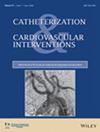The Prevalence of Coronary Microvascular Dysfunction in Patients With Type 2 Diabetes Mellitus
Abstract
Patients with type 2 diabetes mellitus (DM) are more susceptible to microvascular complications. However, whether DM is associated with coronary microvascular dysfunction (CMD) is unclear. This observational study used data from the Coronary Microvascular Disease Registry (CMDR) (NCT05960474) and included patients with angina and no obstructive coronary artery disease (ANOCA) who underwent invasive CMD evaluation using the CoroVentis CoroFlow System (Abbott Vascular, Santa Clara, CA). Patient demographics, comorbidities, laboratory data, echocardiography, coronary angiography, and microvascular physiology results were analyzed. Among the 271 patients, 73 (26.9%) had DM. These patients were more likely to be African American (68.1% vs. 47.0%) and had higher rates of hypertension (93.2% vs. 74.2%), hyperlipidemia (89.0% vs. 68.7%), and chronic kidney disease (17.8% vs. 8.1%) than those without DM. Invasive coronary functional testing showed no significant differences in the index of microcirculatory resistance (IMR) (17.82 ± 8.17 vs. 19.37 ± 13.14, p = 0.268) or coronary flow reserve (CFR) (3.24 ± 1.73 vs. 3.21 ± 1.86, p = 0.909) between diabetic and nondiabetic patients. Similarly, in those testing positive for CMD, there were no significant differences in IMR (27.8 ± 7.4 vs. 32.35 ± 15.22, p = 0.108) or CFR (2.42 ± 1.09 vs. 2.05 ± 0.94, p = 0.199). Although patients with DM exhibited more comorbidities, CMD physiology indices were comparable between the groups.

 求助内容:
求助内容: 应助结果提醒方式:
应助结果提醒方式:


